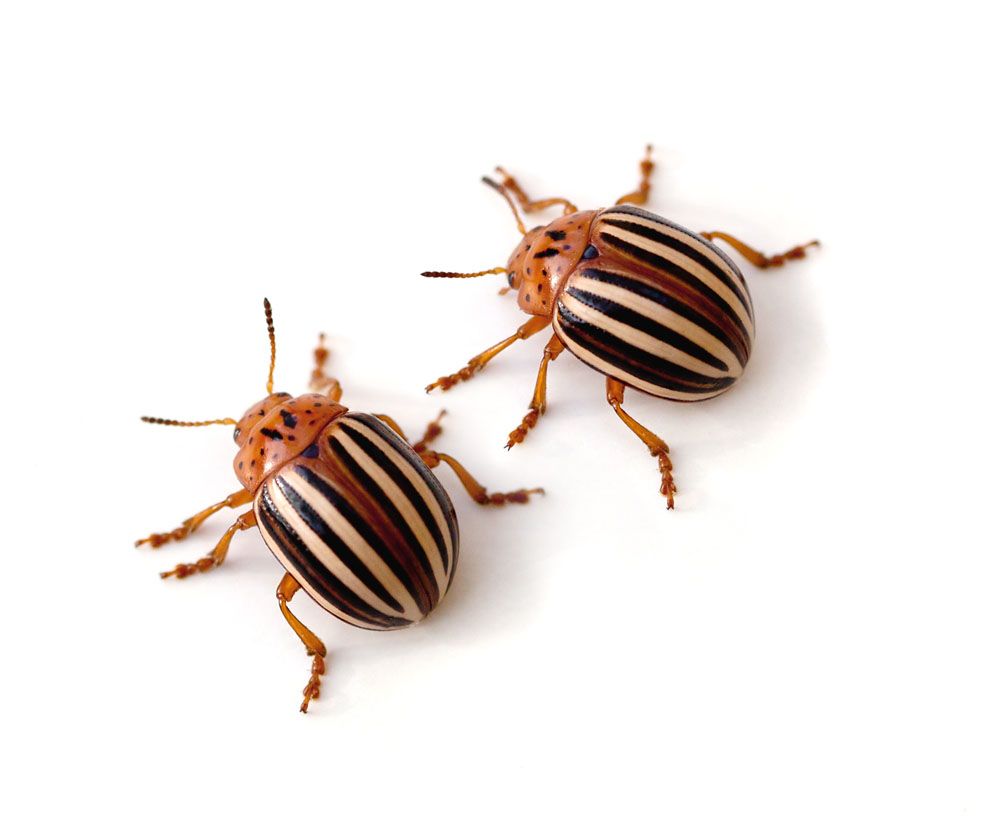
False Patato Beetle – Leptinotarsa juncta
False Patato Beetle – Leptinotarsa juncta
Common Name: False Patato Beetle
Latin Name: Leptinotarsa juncta
Appearance:
Adult:
Adults range in size from 9 to 11 mm (0.35 to 0.43 inches), with one of the white stripes on the back replaced with a brown band. Additionally, the pronotum is brown and is adorned with two prominent black dashes and a few tiny black dots. Even their legs and antennae are orange and black.
Larva:
The larva is pale white, with a humped back and single rows of black dots on both hues.
Pupa:
The pupa takes around six days to grow and has an oval shape with an orange body.
Eggs:
After being placed, the eggs take around five days to hatch and begin feeding on the leaves of the host plant. These deep orange or pale pink eggs, typically seen in clusters, are a little bigger than the Colorado potato beetle.
Host plant:
Its name is derived from the fact that one of its main hosts is the potato plant.
Territory:
Primarily found in the eastern United States, the false potato beetle, Leptinotarsa juncta (Germar), can be seen from northern Florida to east Texas, further north to Missouri, southern Illinois, and Indiana, and further east to Maryland, West Virginia, and Virginia.
Damages caused by False Patato Beetle:
The larvae and adults of this bug, which belongs to the family Chrysomelidae, feed mostly on the leaves throughout their destructive phases. Large-scale defoliation can happen quickly. Larvae and adults feed almost continuously; only when they molt do larvae cease eating. The Colorado potato beetle may consume or harm immature fruits if the host plant contains aboveground fruits, such as eggplant and tomatoes.
Life history and Habits:
The adult stage of the Colorado potato beetle’s life cycle, which can last as little as 30 days, is where it all begins. Adults burrow several inches beneath the ground before emerging in the spring. They breed there and feed on newly sprouting host plants. Eggs are laid by females on the leaves of the host plant, generally on the underside, away from direct sunlight. Adults overwintering typically eat for five to ten days before mating and laying eggs. Adult females lay over 300 eggs in four to five weeks. Eggs can hatch in four to ten days, depending on the humidity and temperature. The overall lifespan of the four larval instars is 21 days. The larvae continually consume the host plant’s leaves, barely pausing to molt. Larvae fall off the plants and bury themselves in the soil, building a sphere-shaped cell and changing into yellowish pupae. Five to ten days are involved in this. Each year, there are one to three generations.
